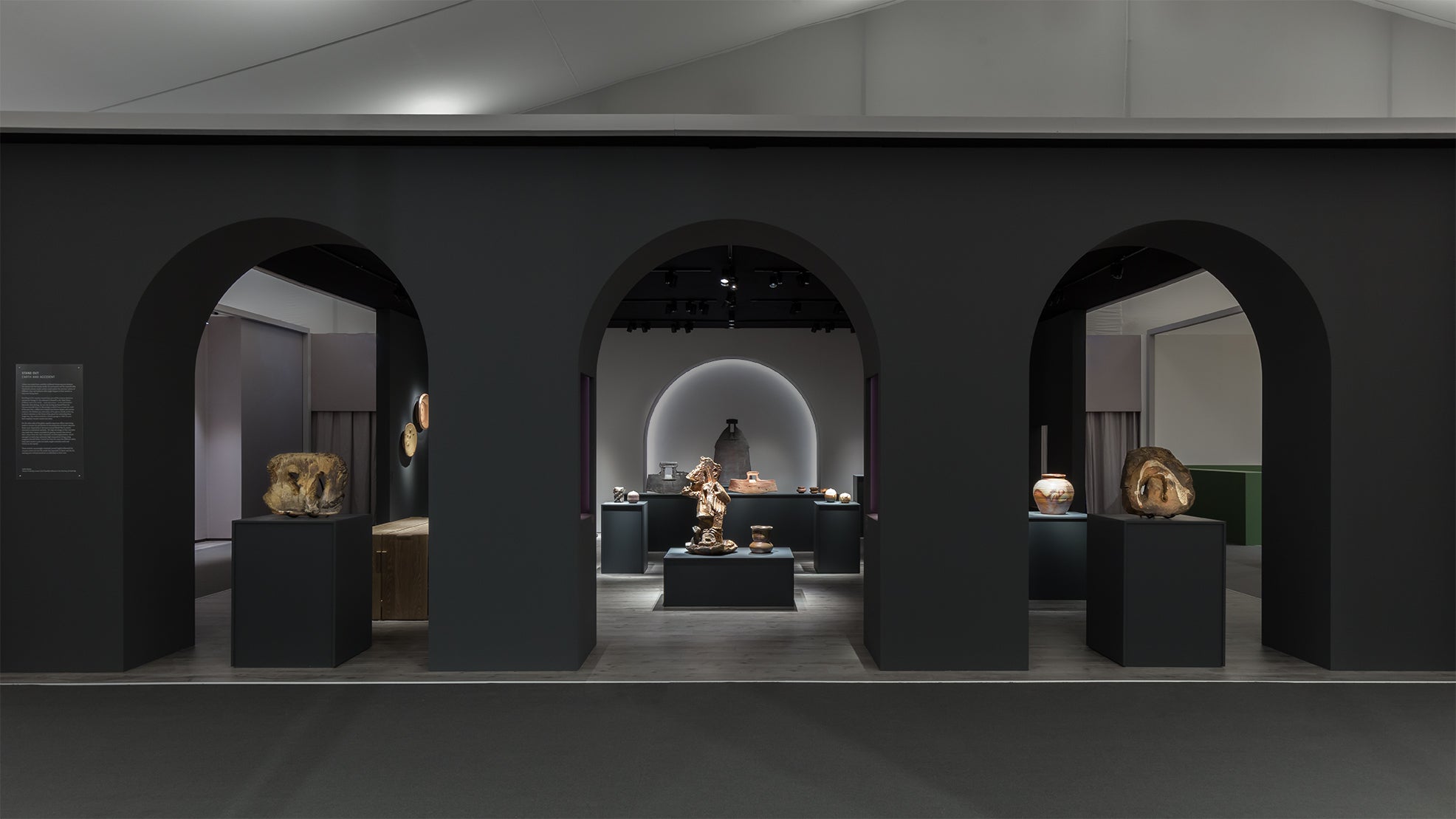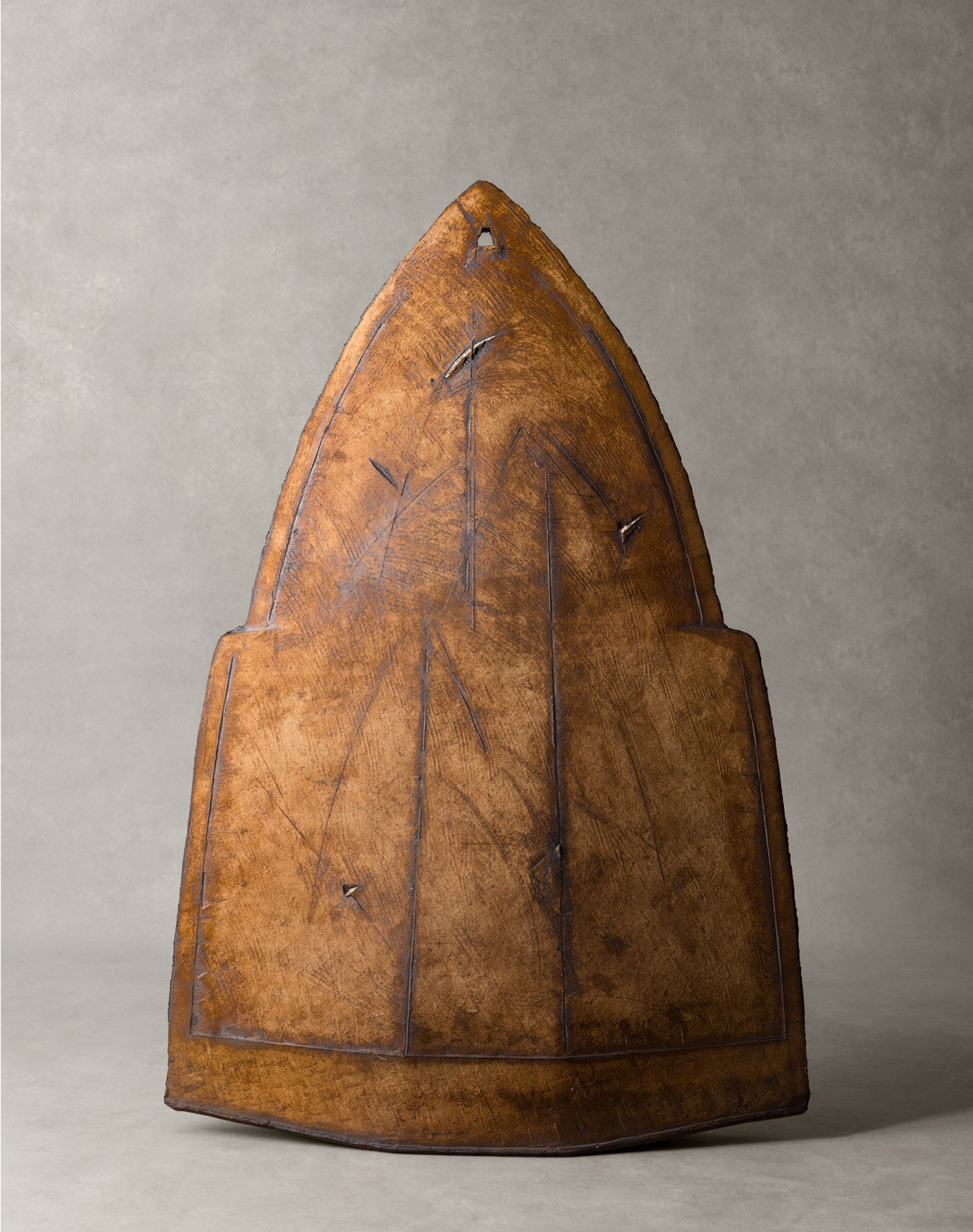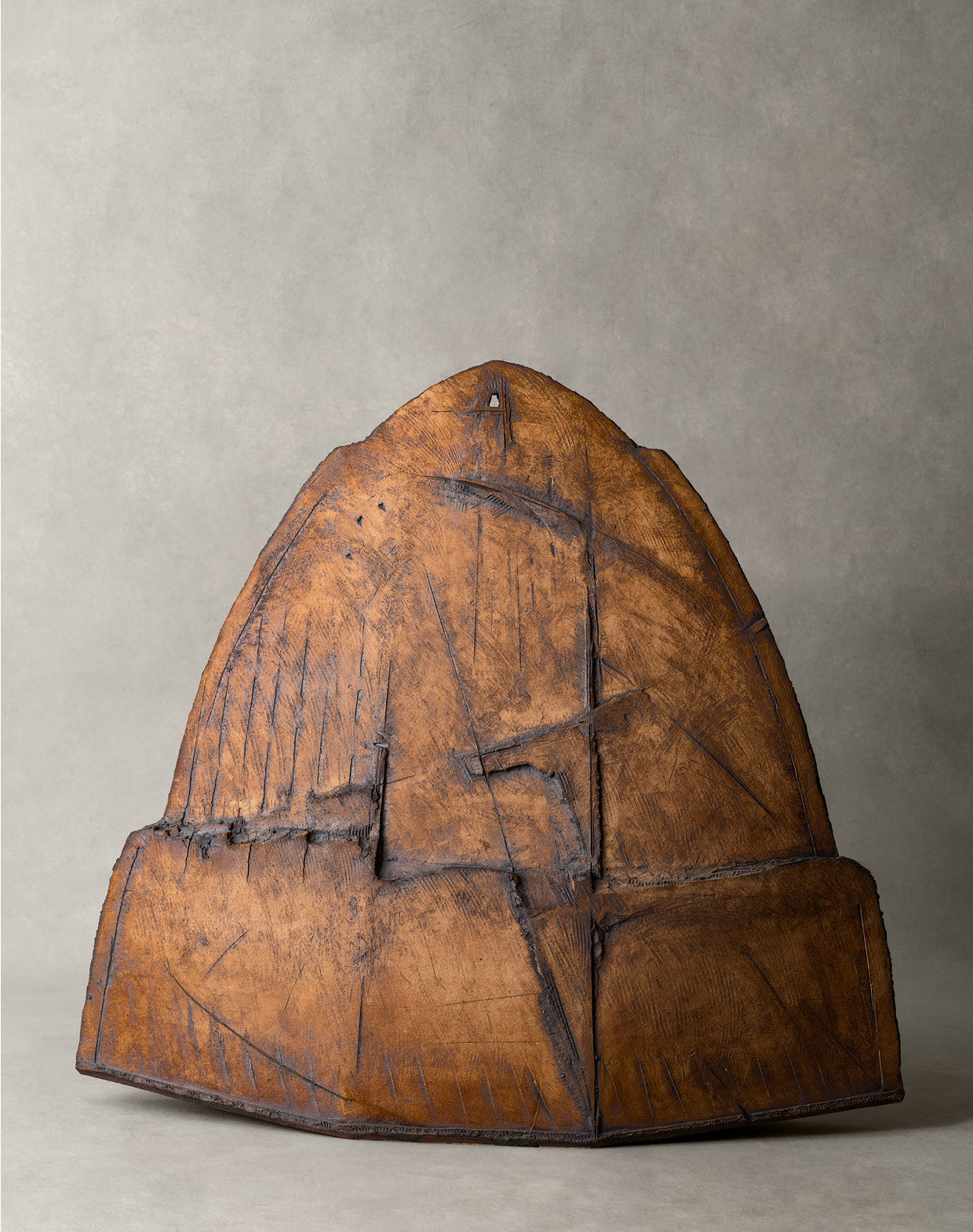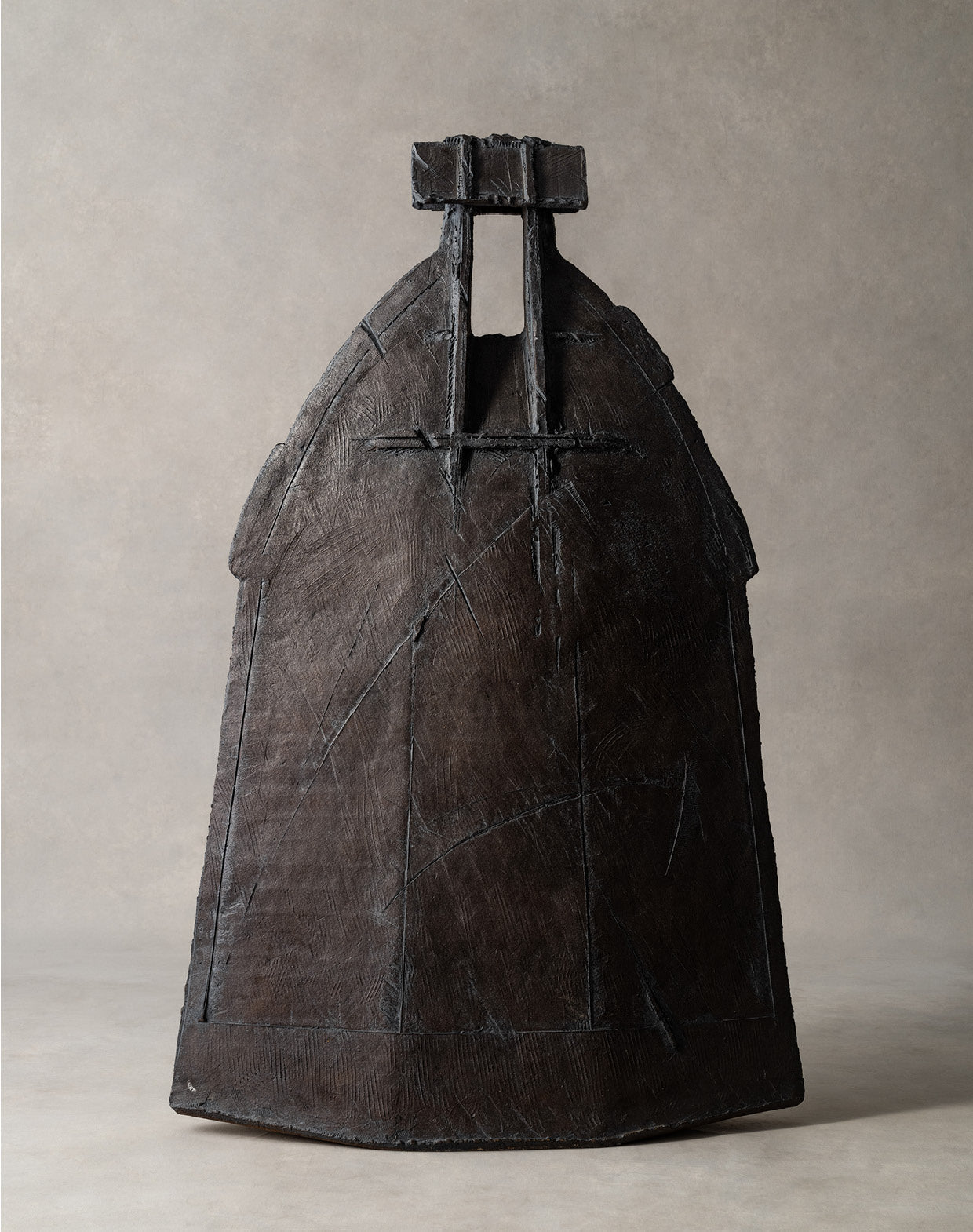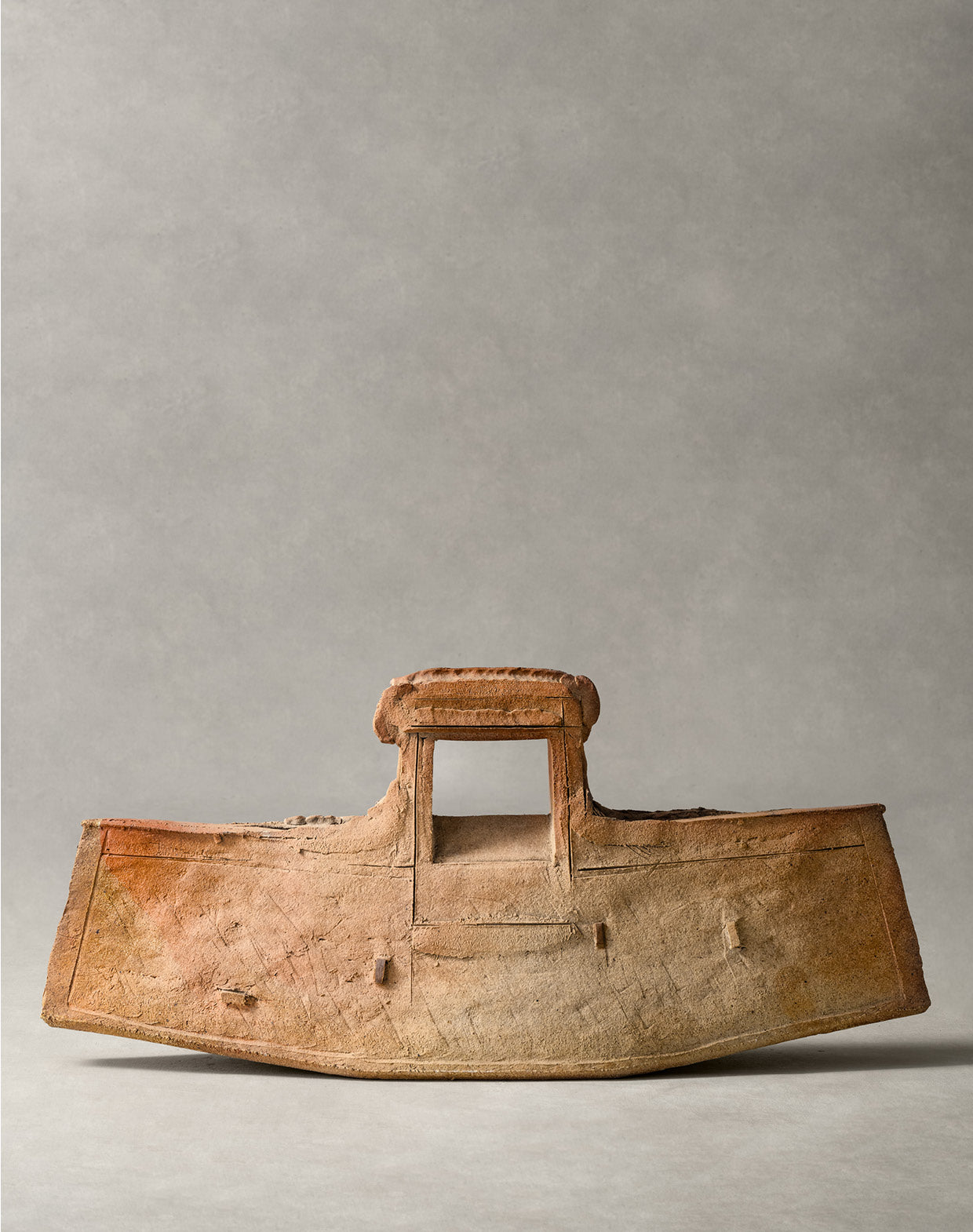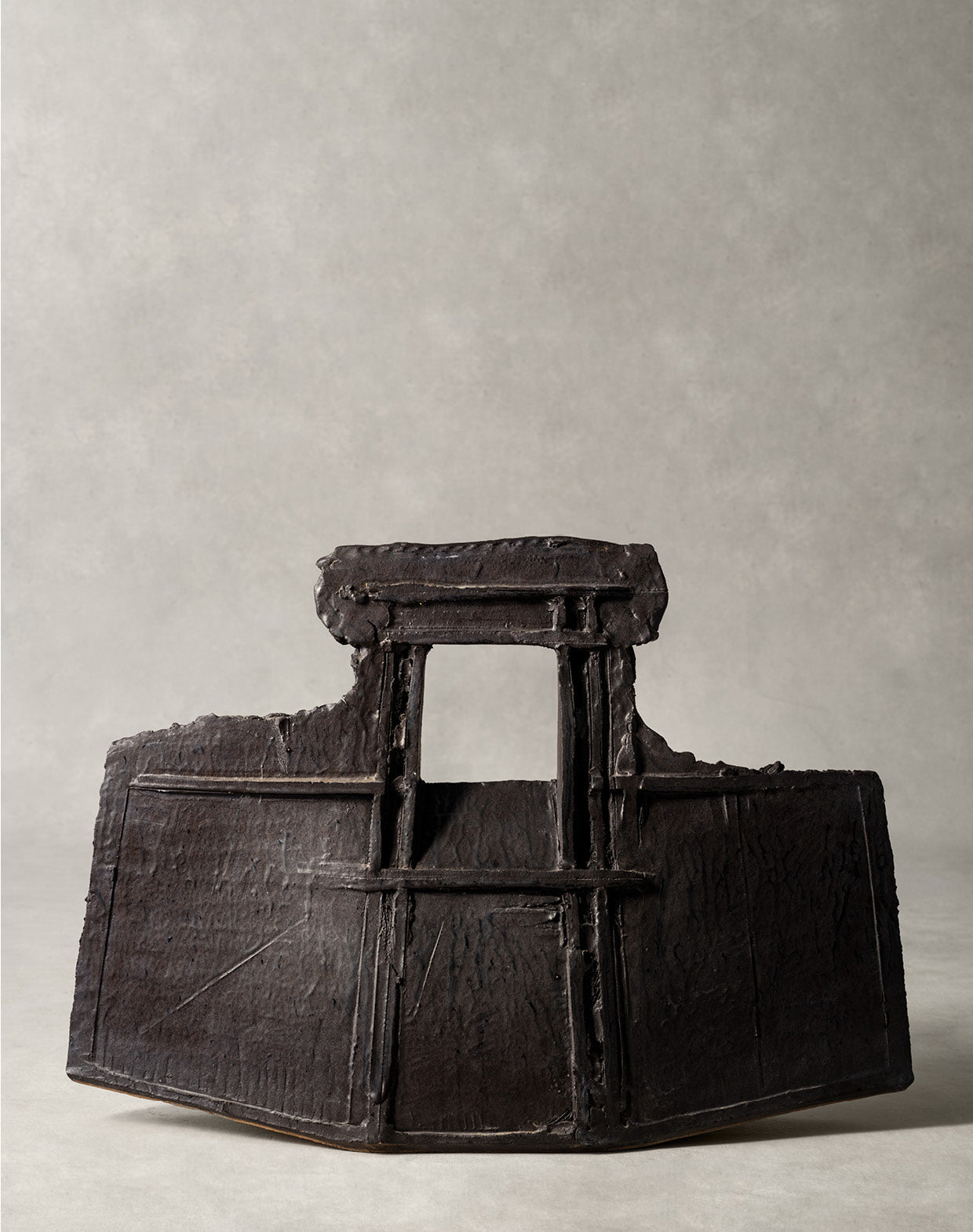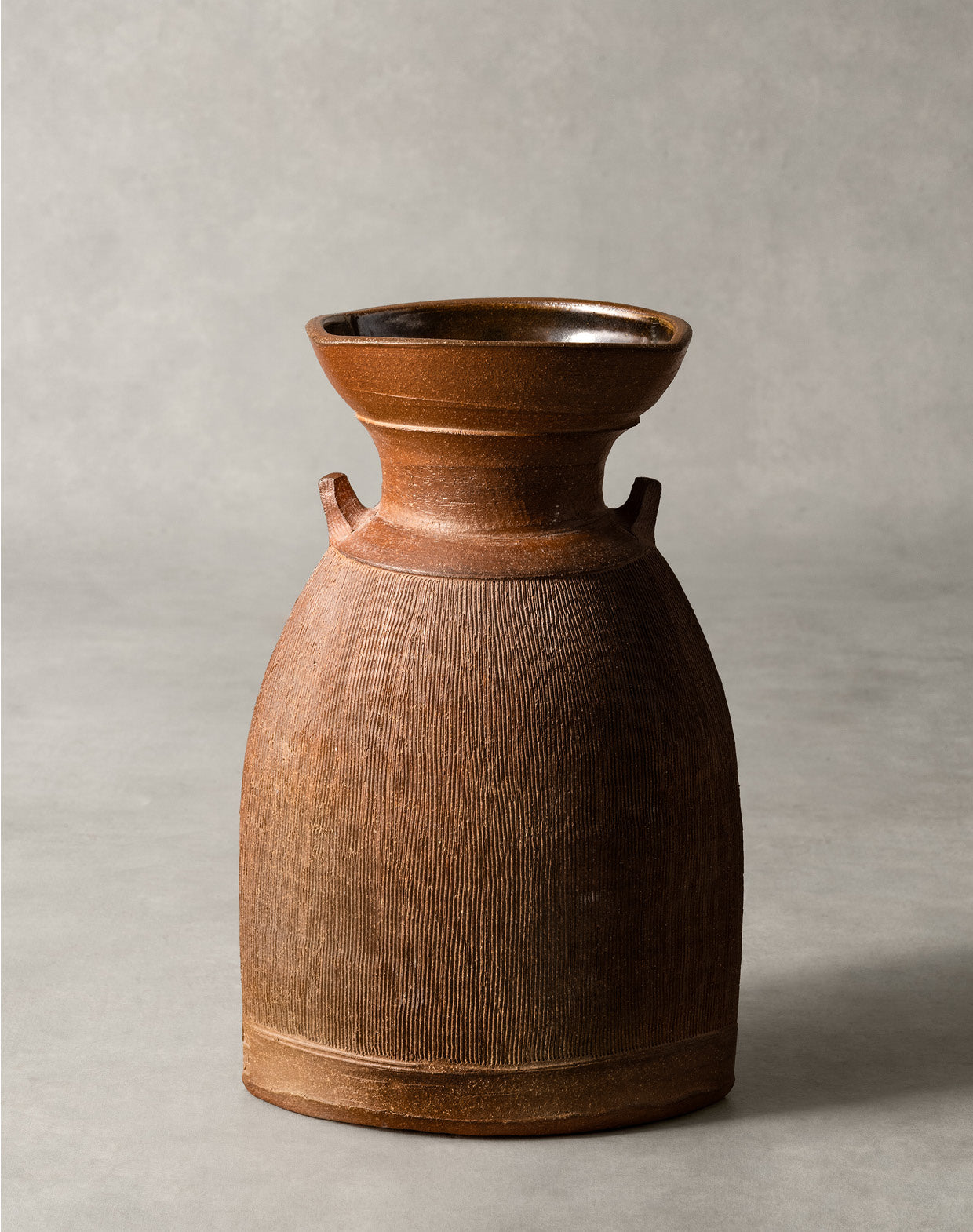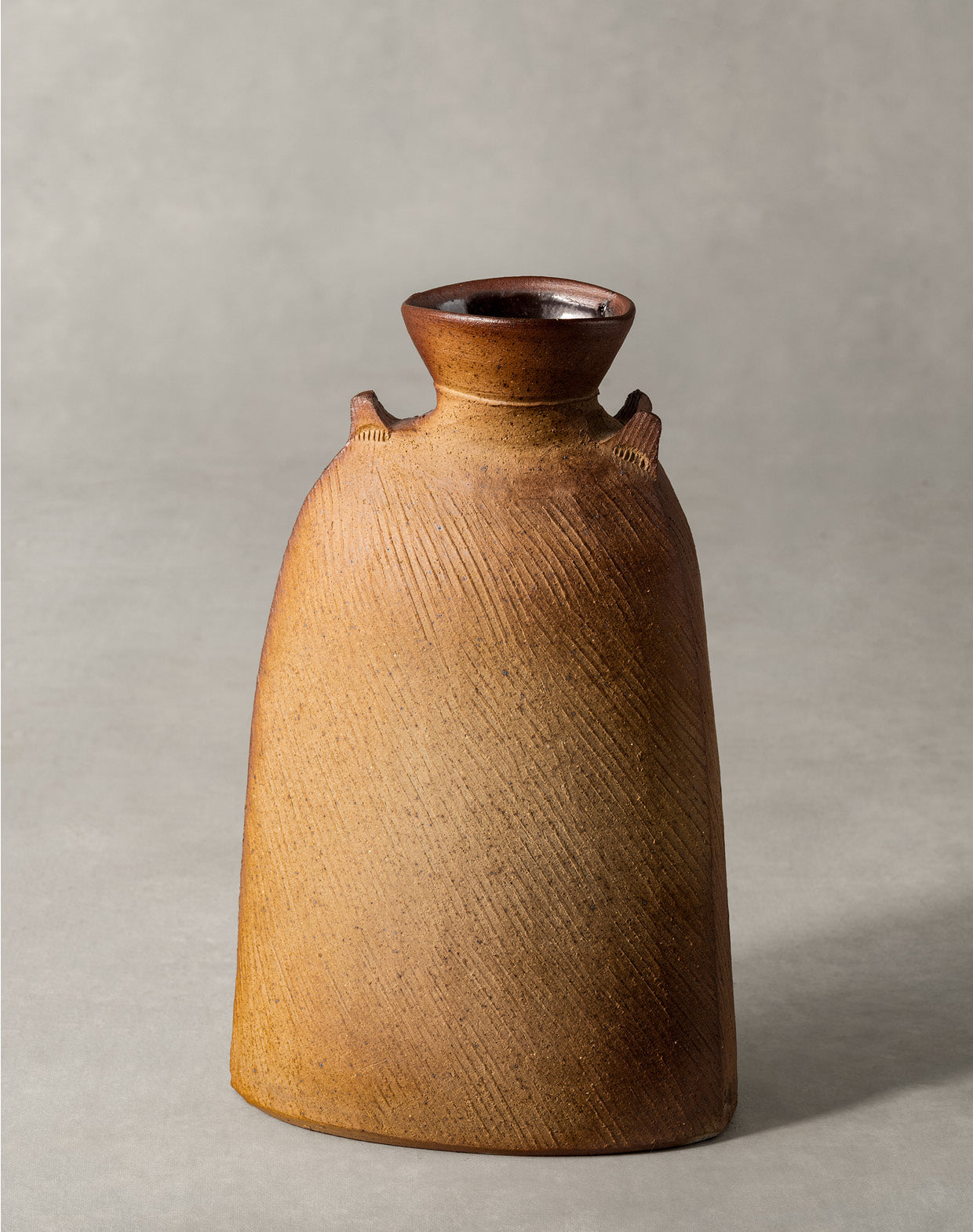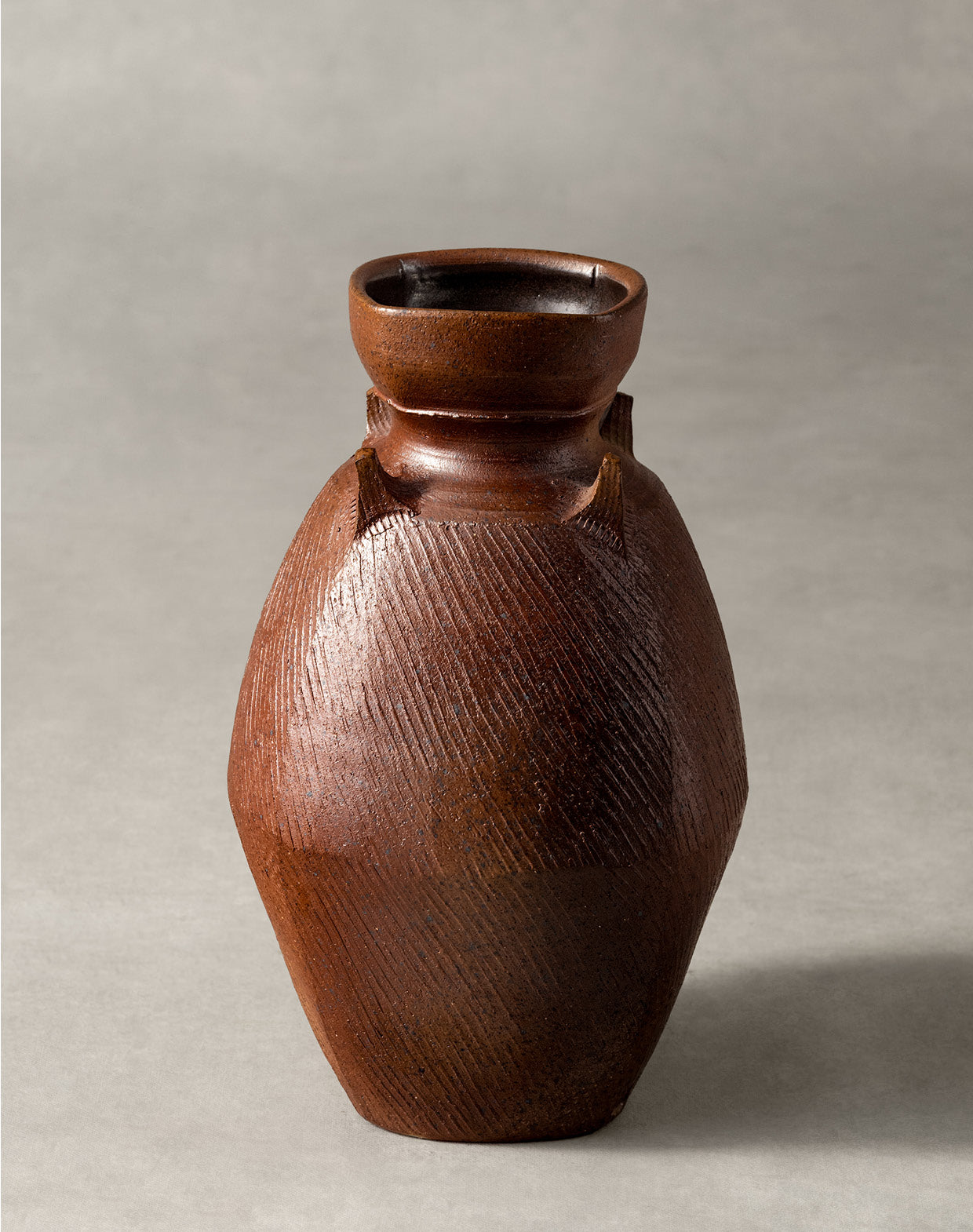FRIEZE MASTERS 2023
20TH-CENTURY STUDIO POTTERY
Installation
Works
About the Show
Guild Gallery, the design gallery founded by Stephen Alesch and Robin Standefer in New York in 2021, will have its fair debut at Frieze Masters 2023 as part of the Stand Out section. The gallery’s presentation explores how the ethos of the British studio pottery movement influenced generations of American and Japanese ceramic masters, and how these artists embraced the movement’s deep interest in the aesthetics and formal qualities of a ceramic work in addition to its function. The presentation features examples by some of the most renowned practitioners of 20th-century studio ceramics, including George Ohr, Peter Voulkos, and Toshiko Takaezu—all of whose work crossed the divide between ceramic craft and fine art—as well as the next generation of ceramic artists, including Rick Hintze, Peter Callas, Eisuke Morimoto and Shozo Michikawa.
Stand Out is a special section of Frieze Masters that brings together a wide range of galleries working outside of the traditional hierarchy of painting and sculpture, curated by Luke Syson, Director and Marlay Curator of Cambridge’s renowned Fitzwilliam Museum. In its third year, Syson’s section explores the many ways in which color is key to the aesthetic of art objects. Spanning from the early 20th century to 1999, Guild Gallery’s presentation will showcase the dazzling spectrum of color made possible through the combination of earth and fire.
Of Guild Gallery’s presentation, Syson writes: “In the early 20th century, the intertwined revival of traditional modes of making in Japan and the rise of studio pottery in Europe and America rescued ceramics from industry. Once again, the colours of different clays were celebrated, and the things that could happen to pots by happenstance in heat, the incalculable behaviours of glazes, all meant that a pot could again feel as individual as the person making it and as particular as the moment it was made.”
Guild Gallery’s presentation features works that exemplify the ways in which artists used heat to transform the inherent color and properties of clay, in the process elevating a functional item into a work of art. The off-center vases of American artist George E. Ohr (1857–1918)—the self-proclaimed “mad potter of Biloxi”—embody this approach. Ohr primarily used red clay that he dug by hand in southern Mississippi, where the natural inclusions of the soil meant that it dried out slowly, allowing him to make the walls of his pots thin so they could be ruffled and crimped into unglazed pots with strange, asymmetrical shapes and contours.
Other highlights include examples by American artist Toshiko Takaezu (1922–2011), known for her rounded, closed forms that embodied ceramics as fine art and more than a functional vessel. While studying at the Cranbrook Institute of Art, Takaezu was deeply influenced by modernism, which merged with explorations of Zen Buddhism, tea ceremonies, and the techniques of traditional Japanese pottery that she discovered during travels to Japan in the 1950s.
In 2024, the Noguchi Museum will present a major touring retrospective of Takaezu’s work that will travel to the Cranbrook Institute of Art and Museum of Fine Arts, Houston, among other museums. Another highlight is work by American artist Peter Voulkos (1924–2002), known for his abstract expressionist ceramic sculptures, which reflect the influence of peers working in the traditional fine art space, including Robert Rauschenberg, Franz Kline, and Jasper Johns.
The works by contemporary artists in the presentation—from the monumental totemic “markers” by American artist Rick Hintze and the contorted structures of Japanese artist Shozo Michikawa, to the expressive, abstract creations of American artist Peter Callas—reflect the influence of their predecessors. Callas, in fact, fired Voulkos’s works in his own New Jersey kiln and traveled extensively worldwide with Voulkos, before becoming one of America’s foremost authorities on the wood fire anagama kiln tradition. The presentation will also showcase examples of Japanese Bizenware pottery by Eisuke Morimoto. While Bizen-ware dates back 1200 years, it experienced a revival after the second World War, with artists like Morimoto employing the historic Bizen-yaki effect, for which no glaze or paint of any kind is used and instead the coloring is created by qualities already in the clay, brought out under extreme and enduring heat during firing.
In all cases, these clay artists were influenced by the techniques of their forebears, but found their own, entirely original voices, all inflected with a reverence for the expressiveness of texture, tone and color made possible by clay.
On November 2, Guild Gallery will open an exhibition at its New York space that expands the Frieze Masters presentation, including examples that look into the 21st century. Titled Earth and Accident, the exhibition will be curated by Syson and will celebrate the formal qualities that can transform clay by happenstance of nature and heat, looking at the relationship between historic works and contemporary works by the next generation of ceramic artists.
For Frieze Masters 2023, Roman and Williams—the celebrated New York-based architecture and design studio founded in 2002 by Alesch and Standefer—has created a new exhibition design concept for the Stand Out. The project is a reunion for Syson and Roman and Williams, who worked together closely on the acclaimed redesign of the British Galleries at The Metropolitan Museum of Art. The exhibition design for Stand Out draws upon strategies developed to celebrate four centuries of British sculpture, furniture, and applied arts at The Met, for which Alesch and Standefer spent five years immersed in the museum’s collection, working closely with curators, conservators, and museum leadership to create a fresh and engaging visitor experience that challenged the status quo of museum exhibition design. They will apply the same approach to Stand Out, using a distilled classicism that creates a strong visual focus on individual items across a variety of material spanning mediums and centuries.

PETER CALLAS IN HIS STUDIO

PETER CALLAS (B.1951, USA), LARGO, 1998, GLAZED STONEWARE, ANAGAMA WOOD FIRED, 48"H X 18"W X 18"D
PETER CALLAS
B. 1951, USA
One of the foremost American sculptors working in clay today, Peter Callas forges large-scale, abstract- expressionist sculptures using a traditional wood-fired anagama kiln. After an extensive period of studying anagama kilns in Japan early in his career, he built one of his own in America, the first ever constructed in the country. Callas’s inventive creations possess an ancient quality, seemingly battle-worn and scarred, as if they live and breathe, whisper and sigh—but within them pulses an undercurrent of tension, energy, and passion, reflecting the artist’s inner life and aesthetic vision. Callas has exhibited work in Australia, France, Germany, Brazil, China, Korea, Japan, Norway, and throughout the United States. In 2017, he was elected to the International Academy of Ceramics, and in 2018, he received the prestigious Pollock-Krasner Foundation Grant.His work is found in museum collections around the world, including the Metropolitan Museum of Art in New York; the Philadelphia Museum of Art; the National Museum of Modern and Contemporary Art in Seoul, Korea; and the Museum of Modern Art in Sao Paolo, Brazil.

RICK HINTZE IN HIS STUDIO

LEFT: RICK HINTZE (B 1944, USA), GATE, 1998, STONEWARE, IRON STAIN, MANGANESE DIOXIDE, 45.5"H X 29"W X 8.5"D RIGHT: RICK HINTZE, UNTITLED, 1998, STONEWARE, IRON STAIN, 28.25"H X 29.75"W X 7.5"D
RICK HINTZE B. 1944, USA Rick Hintze makes monumental sculptures, striking coiled vessels, and functional pots out of humble, natural materials, often working with clay, iron oxide, and wood ash. Their surfaces are indelibly marked by the focused, deliberate movement of his hand, and their textures are born from spontaneous interactions with the natural elements: earth and air, fire and water. A recipient of the National Endowment for the Arts Individual Artist Fellowship, among other awards, Hintze received a B.A. in art from Knox College, an M.A. in Art History from the University of Iowa, and an M.F.A. in Ceramics from the University of Notre Dame. His work is in the collections of the Racine Art Museum, the Cedar Rapids Museum of Art, Southeastern Louisiana University, Ripon College, and various regional and national private collections.
 SHOZO MICHIKAWA IN HIS STUDIO
SHOZO MICHIKAWA IN HIS STUDIO
 SHOZO MICHIKAWA (B 1953, JAPAN), TWISTED VESSEL, CIRCA 1998, STONEWARE, SILVER GLAZE, 7"H X 4.75"W X 4"D
SHOZO MICHIKAWA (B 1953, JAPAN), TWISTED VESSEL, CIRCA 1998, STONEWARE, SILVER GLAZE, 7"H X 4.75"W X 4"D
SHOZO MICHIKAWA B. 1953, Japan The Japanese ceramicist Shozo Michikawa transforms clay into kinetically suggestive vessels marked by their dramatic contortions, expressive textures, and surreal forms. His signature technique of twisting clay on a potter’s wheel—a reflection of his interest in exploring abstraction within the boundaries of functional vessels—has its roots in time spent working at a ceramics factory in his youth. Since the 1970s, Michikawa has lived in the city of Seto in Japan’s Aichi Prefecture, a region whose rich history of ceramics has influenced his own artistic language. His angular pieces are finished with simple yet striking natural ash and wood-ash glazes, inspired by the serene landscape of his childhood home in Japan’s northernmost prefecture, Hokkaido. His solo exhibitions have been hosted by galleries in more than a dozen countries, and his work is found in the collections of the Victoria Albert Museum in London; the Los Angeles County Museum of Art and the Philadelphia Museum of Art in the United States; the Musée Cernuschi in Paris; and the International Museum of Ceramics in Faenza, Italy, among other venues.
 EISUKE MORIMOTO IN HIS STUDIO
EISUKE MORIMOTO IN HIS STUDIO
 EISUKE MORIMOTO (B 1941, JAPAN), BIZEN VASE, 1996, STONEWARE, WOOD FIRED, 15.75"H X 15.25"W X 15.25"D
EISUKE MORIMOTO (B 1941, JAPAN), BIZEN VASE, 1996, STONEWARE, WOOD FIRED, 15.75"H X 15.25"W X 15.25"D
EISUKE MORIMOTO B. 1941, Japan The Japanese ceramicist Eisuke Morimoto is a modern master of Bizen-yaki, the oldest living form of pottery in Japan and one of the six forms adapted from Korea’s stoneware tradition during the Heian period roughly 1,200 years ago. Morimoto still uses the four-chamber Nobori-kama wood-fired kiln he built a half century ago, as does his son Hitoshi Morimoto, to whom he has passed on this ancient tradition, and an internationally acclaimed sculptor in his own right. The soil used to form Morimoto’s clay is mined from the fields of Inbe, near his home in Bizen. To achieve his signature Bizen-yaki finishes, Morimoto uses no glazes or paints of any kind; instead, the hues of his work are born from preexisting qualities found in his clay, brought out under extreme heat during the firing process.
 GEORGE E. OHR, THE SELF-PROCLAIMED “MAD POTTER OF BILOXI”
GEORGE E. OHR, THE SELF-PROCLAIMED “MAD POTTER OF BILOXI”
 GLAZED AND UNGLAZED EARTHENWARE BY GEORGE E. OHR.
GLAZED AND UNGLAZED EARTHENWARE BY GEORGE E. OHR.
GEORGE E. OHR 1857-1918, USA The self-proclaimed “Mad Potter of Biloxi,” George Ohr transformed the traditional folk aesthetic in pottery into a pioneering form all his own. The self-taught American ceramicist’s vessels are technical tours de force, unrivaled in the thinness of their bodies, the control with which they are shaped—and, crucially, the ways they are misshapen. Ohr threw technically perfect vessels, then folded and twisted them into unique, unconventional forms. Though he claimed to have made more than 20,000 ceramic pieces, his work remained largely unknown at the time of his death in 1918. For decades, his pots sat in a garage in Mississippi, behind a gas station owned by his sons, before being unearthed and recognized for their preeminent, groundbreaking importance: Ohr’s work is now seen as a harbinger of the American abstract sculpture and pottery movement, a significant chapter in the history of American ceramics that rose to prominence in the mid-20th century.
 TOSHIKO TAKAEZU IN HER STUDIO
TOSHIKO TAKAEZU IN HER STUDIO
 GLAZED AND UNGLAZED WORKS BY TOSHIKO TAKAEZU
GLAZED AND UNGLAZED WORKS BY TOSHIKO TAKAEZU
TOSHIKO TAKAEZU (1922–2011, USA) Toshiko Takaezu was an American ceramic artist, painter, sculptor, and educator who is known for her rounded, closed forms that helped push ceramics, long regarded merely as functional vessels, into the realm of fine art. Born in Hawaii to Japanese parents, Takaezu studied painting at the University of Hawaii and ceramics at the Cranbrook Academy of Art, where the influence of modernism took hold in her work. She traveled to Japan in 1955, exploring Zen Buddhism, tea ceremony, and the techniques of traditional Japanese pottery, all of which manifested in her pieces. Known as a profoundly influential teacher and mentor, Takaezu indelibly shaped generations of younger artists at the Cleveland Institute of Art and Princeton University. Her work is found in the collections of the Metropolitan Museum of Art in New York, the Museum of Fine Arts in Boston, the Los Angeles County Museum of Art, and the Philadelphia Museum of Art, among dozens of other museums.
 PETER VOULKOS IN HIS STUDIO
PETER VOULKOS IN HIS STUDIO
 PETER VOULKOS (1924-2002, USA), CHARGER PLATE, 1978, STONEWARE, 22.25"H X 22.25"W X 3.5"D
PETER VOULKOS (1924-2002, USA), CHARGER PLATE, 1978, STONEWARE, 22.25"H X 22.25"W X 3.5"D
PETER VOULKOS 1857-1918, USA A legendary figure in the history of American ceramics, Peter Voulkos was a Greek-American artist renowned for his abstract expressionist sculptures, which crossed the traditional divide between ceramic crafts and fine art, helping to revolutionize the form. He established the ceramics departments at the Los Angeles County Art Institute and at UC Berkeley, where he became known for the live sculpting sessions he held in front of his students, demonstrating his intense, even unforgiving approach to working with raw material while simultaneously showcasing his mastery of craft. His work is found in more than 100 museum collections around the world, including the Metropolitan Museum of Art and the Museum of Modern Art in New York; the Smithsonian in Washington, D.C.; the Philadelphia Museum of Art; the Stedelijk Museums in Amsterdam and Eindhoven; and the Tokyo Folk Art Museum and the Kyoto National Museum of Modern Art in Japan.

CERAMIC WORKS BY RICK HINTZE, PETER CALLAS, EISUKE MORIMOTO, AND SHOZO MICHIKAWA

